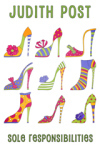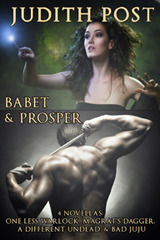Judith Post's Blog, page 125
November 2, 2013
Writing: Who are your favorite writers & Do they influence you?
I’m at the end of reading a novel that I loved–The Prince of Thorns by Mark Lawrence. And it’s reminded me that I’ve read LOTS of dark fiction in my time. Dark fiction, to me, is different than horror. Horror aims to scare. Dark fiction means to disturb. I think “disturb” lasts longer. But that’s not my point for this blog. I was thinking about which authors have stood out, for me, above others. And it made me wonder how much they’ve influenced my writing.
I’ve said before that I was a James Fenimore Cooper fan when I was in middle school. His most famous novel was The Last of the Mohicans, but he wrote an entire series with Natty Bumppo (later known as Hawkeye) as his protagonist. Natty’s parents were settlers, but he was raised by Delaware Indians and became involved in the conflicts of the Mohican and Huron Indians, and the white settlers and the Indians. He developed a set of ethics that were his own and a moral ambiguity that combined his Indian upbringing and his white heritage. And that’s what appealed to me about those books–that feeling of straddling two worlds, sympathizing with the good of both and irritated with the wrongs of both. I like stories about protagonists that don’t fit in anywhere. Patricia Briggs’s Mercy Thompson was raised by werewolves, but she isn’t one. Ilona Andrews’s Kate Daniels has magic and a bloodline that she tries to hide, and Faith Hunter’s Jane Yellowrock has a heritage that she’s slowly starting to remember. That type of protagonist–the loner who struggles to live by her own rules–spilled over into my Fallen Angels novels. Enoch is fighting a losing battle. He doesn’t want to stay on Earth, but Caleb doesn’t ever want to go Home.
During high school, Latin and Shakespeare filled my mind with myths and legends, tragedies and political intrigue. I enjoyed the epic battles to wrest power from one another, both on Bosworth Field and at Troy, as the Greeks tried to defeat the Trojans. Myths have crept into many of my stories, especially Empty Altars and some of my novellas. And as I read Prince of Thorns, I couldn’t help comparing The Prince of Thorns with Shakespeare’s Richard III. Both Jorg and Richard decide to become villains and to excel at it–at least in literature.
The next author who captivated me–and held me for years–was Agatha Christie. With a few deft strokes, she created characters that I felt I knew, and she taunted me with red herrings and clues as I tried to solve her mystery’s puzzle before her protagonist did. But it wasn’t just the murders that dazzled me. She often wrote about exotic locations, and she firmly believed…and stated…that anyone was capable of murder, if put in the right circumstances. Christie taught me the fine art of plotting. I followed my Christie years with books by Nancy Pickard, Martha Grimes, and Elizabeth George. They might not be the masters of puzzles and plots that Christie was, but they took mysteries and pushed them into literary gems. Their use of language and characterization made me long to string words together to higher levels.
The last authors I’ll mention in this post are Jane Austen and Georgette Heyers. They fascinated me for an entirely different reason. They excelled at social mannerisms, which was just plain fun, but they also excelled at the independent, feisty female protagonist. I tried out a few female P.I. novels, but they didn’t give me the same sense of enjoyment. I don’t mind sarcasm or cynicism–it often appeals to me–but the P.I.s I read felt just plain jaded. And that didn’t intrigue me. I didn’t find heroines I liked nearly as much until I found urban fantasy. And those females added more. They didn’t just have wits and smarts and a thumb-your-nose at the world attitude, they also carried weapons and knew how to use them. A literary bonanza.
I’d be remiss if I didn’t mention that, among all the authors I found and loved, I also found a supply of short stories that became a steady stream of entertainment for me. Every Christmas, I asked for the anthology, The Year’s Best in Fantasy and Horror, edited by Ellen Datlow and Terri Windling. And I slowly indulged myself in the best twisted, dark stories available for that year. As I said, I like dark…
What authors are your favorites? And how have they influenced you? Or your writing?


October 28, 2013
Writing: Word Choice, Brush Strokes, & Clarity
It was my turn to read at our writers’ group last Wednesday. Sometimes, I polish and edit to take in something that’s in really good shape. It’s fun to see everyone nod their heads and tell me I’ve written a good scene. But sometimes, I take in something that I’ve worked on, but I know isn’t quite right, because Scribes is wonderful about picking out the flaws that I’m too close to see. Last Wednesday, I took an opening that I’d been fighting with and rewriting until I knew I was close, but I also knew I wasn’t there. And the truth is, I’d played with it so much, I couldn’t tell if I was making it worse or better.
I wanted to open the novella with a bang–a surprise attack by a friend who apologizes before he tries to kill Ally and Dante. They don’t know why he’s attacking them, and he can’t tell them. They don’t want to hurt him, but they don’t know what’s going on. When I finished reading, three-fourths of my writing buddies didn’t know what was going on either. Bless Neil, he said, “I was listening and enjoying every bit of it, but when you got done, I realized I didn’t really know exactly what was happening.” He wasn’t the only one. Once I listened to their comments, though, I realized that the fixes I needed weren’t big. I’d been working so hard on big things–creating characters, the dialogue, and action–that I didn’t fine tune the small stuff. Some of it simply came down to word choice. And as my friend, Paula, said, “It doesn’t need an overhaul, just brush strokes.”
I can give you an example. Dante’s friend who attacks them is a werewolf. When I wanted to show that he was losing control, I said Foam bubbled from his mouth. “Too nice,” Sia said. “Use something moodier like Foam slathered from his mouth.” A “nice” word in a frenetic scene throws off the feel. Word choice is important. So is upping the ante, to make each action more vivid. Instead of having him break his nose when he hits Ally’s shield, “have his skull split,” Sia said. “It’s more vivid. This is a roller coaster opening. Make it feel like one.”
Maybe my best advice? Paula said, “Each person’s motivation is in your head, but it’s not always on the paper. Hint at it or put it there.” All it took was a sentence here, a few words there. The characters and scene worked. They just needed tweaked. And sometimes, I need “outside” opinions to know what to focus on.
So, I hope each one of you has at least two readers you can trust to critique your writing or a writers’ group like mine. Someone who can tell you if your writing has clarity. Can a reader follow it, or is it confusing? Are the characters’ motivations clear for each and every thing they say or do? What did you do right? And what can you make better?
And remember that sometimes, it’s the small things that need fine-tuned.
P.S. My fourth Emerald Hills novella went online last week. No werewolves in this one. Only shoes and magic. http://www.judithpostswritingmusings.com/


October 20, 2013
Writing: You Can’t Win ‘em All
I’ve been writing a series of novellas that I really enjoy. I don’t know if I chose the wrong covers for them or if I’m marketing them wrong, but they just aren’t catching on. If you have ideas, I’d be happy to hear them. If you don’t, that’s fine, too, because I’m guessing that mixing medieval times with supernaturals wasn’t my best idea. But it’s possible that I don’t care.
Short fiction, in general, isn’t as popular as novels. Most of my novellas go up in the rankings for a while, and then fall for a while, bouncing up and down. Not wonderful, but something I can live with.
I’ve learned from experience. I intend to spend more time concentrating on novels and less time churning out novellas. But novellas, for me, are like a piece of chocolate. Instant gratification. In a week or less, I have a finished product that I like. Michael creates a wonderful cover for my 40 pages, and I’m a happy girl. It’s like opening a small box that you know will have something wonderful inside.
I wrote short stories for AGES. They’re my first love, but when markets started drying up for them, I had to concede that longer was the rule of the literary land. One of my friends–whose writing I deeply admire–Ed Bryant, wasn’t so happy when I devoted my time to novels over short fiction. He’s made a distinguished career with short fiction, but let’s face it. I’m no Ed Bryant. And markets aren’t the same as they used to be. So now, when I write short, it’s almost an indulgence, paying homage to an art form I love. (And boy, was I happy when Canadian writer, Alice Munro–a short story writer–won the 2013 Nobel Prize for literature–a short story writer!!! Hooray!)
Anyway, some of my novellas do better than others. But my Christian/Brina series is doing dismally. So you’d think I’d write a wrap-up novella, bundle the stories, and call it a day, wouldn’t you? And I intended to. Until I found a cover for a story that I thought would work perfectly in that series. And then, wouldn’t you know it? I found another cover for Christian and Brina that I liked. So I’m torn. And I kind of think Christian and Brina are going to stay as part of my mental landscape when story ideas dart through my brain.
For one thing, I’ve been grown-up for a long, long time, but I still fantasize about castles. Not real castles, mind you. Those can be cold and drafty…and smelly, too. But FICTION castles. And my stories are only as factual as my story ideas want to make them. And then, I have a thing for magic and Merlin. And Harry Potter. So witches had to populate my fictitious serfdom–because that made me happy. And then the witches had to battle something–so why not choose all of the leftover mythological creatures that I haven’t used before? A match made in my idea of writing heaven. Castles, witches, vampires, evil lords, and a Greek mythological creature or two.
I doubt my rankings will ever soar on this series. But maybe for this series, I don’t care. Maybe this series is for ME. So there’ll be a new Christian/Brina novella out later in November. And I might even lose money on it. But once in a while, I write for myself. 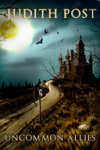
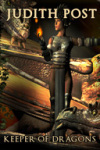
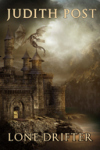 http://www.judithpostswritingmusings.com/series-of-novellas.html
http://www.judithpostswritingmusings.com/series-of-novellas.html


October 13, 2013
Writing-does a happy childhood work against you?
A friend of mine read one of my manuscripts recently and said, “You need to show more anger, more emotion.” Now, I thought I had, but she went on to say, “You’re always on such a level keel, no wonder you have trouble letting your characters be dirt bags once in a while.” That gave me pause for thought. I mean, I work hard to be a fairly nice person, but does that hurt me as a writer? I’d had someone else, earlier in my career, tell me much the same thing. She asked, “Were you happy as a child?” “Oh, yes,” I answered. “Well, that’s why you’re having trouble writing,” she told me.
Could that be true? Do people who grow up with parents who argue or hit or worse have the edge because they have more emotions to pull on? I do think that a writer needs a certain amount of life experience to enrich their writing. And adversity certainly builds character…and the ability to draw from anger, disappointment, and loss. But I don’t know many people who’ve breezed through life, free of scars. Not all of us, though, have the perspicacity to dwell on those things to enrich our writing:)
A new writer came to Scribes a while ago to read a piece about how she’d been sexually abused and then turned to drugs to deal with the issue. She became addicted, and now she was finally drug free. It was a deep, moving story of her journey that would be impossible for me to tell. Her words had a raw emotion and aggressive strength that came with her pain and turmoil. I can’t tell that story, because I don’t know it, and to some point, “write what you know” makes perfect sense. But I can tap into other emotions, ones I’ve experienced, to bring other stories to life. Me and Suzanne K were the tallest people in our class, year after year, through school. We both hit 5’10″ before high school. She had a figure. I was a stick. Did the nickname Olive Oyle bother me? A little. Not much. I spent a lot of time living in my own head. And that was probably my biggest obstacle to being a writer. I had a lot more fun living in worlds other writers created.
My friend, who teaches handwriting analysis, still badgers me to ”open” my vowels. My a’s and o’s and e’s are legible, but scrunched. She tells me over and over again that scrunched vowels mean that I need to “let loose,” to “open up.” Maybe. But I’ve learned that even if I tend to be a mite private in my life that doesn’t have to apply to my characters. I can let them have tempers, be “kickass” or mouthy–all of the things that I’m not. My characters aren’t me, thank goodness! They can be anything, as long as I can relate to their emotions, and that makes them fun to write.
I’ve played with a few characters who aren’t “nice,” that I’m pretty attached to. Caleb, in Fallen Angels, left Heaven because he didn’t want to follow rules. He wanted to do as he pleased, and if that meant that he had to drink human blood to replace the benefits of the Light, then that’s what he’d do. I meant for him to be a villain, Enoch’s adversary. But Enoch still loves him, and oddly, so do I. Does that mean I’m embracing my “dark side”? Beats me, but I know I have one. We can all be selfish once in a while. And let’s face it. Readers like certain villains. Look at Hannibal Lecter or Walt in Breaking Bad. I think what involves readers is the human condition. If a character meets a hurdle and makes the wrong turn, that might add more interest, not less. If we can make a character real, even if he’s flawed, and make him sympathetic, even if he kills people, we can identify with him. So dig deep and let your characters show true depth–their worries, fears, and uglies. Readers have felt those things, too. They’ll understand.


October 6, 2013
Writing–random thoughts
I’m not an especially social person. I like people, but as a spice that accents my more ordinary, sit-in-front-of-my-computer habits. A sprinkle here, a dash there, but nothing overpowering. I like my alone time–a lot. My husband wanders in and out during the day, but he gives me plenty of writing time. So it’s really unusual when I fill my calendar with social events.
Last week, we had my daughter from Florida, John’s brother from Oakland, and Tyler from college at Bloomington, come to stay with us for five days. And I enjoyed every minute of it. Then on Thursday night, John and I took my sister, Mary, to see So You Think You Can Dance at the beautiful, restored Embassy Theater downtown. (We used to grab Mary and go to Chicago once a year to see dance shows. Now we hope something comes to us.) On Saturday, I had my sisters over for an afternoon tea. We’d planned it before everything else filled up our time, and I’ve been dying to use the blue glass, luncheon plates I snagged at an antiques store, so we decided not to reschedule. And today, Sunday, my sister and I went to see the Parade of Homes on the far, far north side of our city. We walked through homes neither of us will ever be able to afford, but they’re fun to visit to see the latest trends. Everything was wonderful and fun, but now, I’m ready to hibernate and hide in my office and write.
I’m still working on plotting my new book. I’ve been adding scene ideas sporadically. And it’s occurred to me, as I go, that there are other reasons to do at least a smidgeon of plotting before you start your book. One, I’d have never realized that some of the scenes in my head would have a lot more punch if they were told from Angel’s (the 10-year-old’s) POV instead of Enoch’s. In my head, I “saw” the scenes, but I couldn’t see that Enoch would just be a distant bystander, where Angel would be a particant. And the scenes would be a lot more vivid and powerful if SHE told them. I also couldn’t see where the VERY slow building romance between Ulrich and Scarlet would sag if told by Enoch, but might sizzle if told through Ulrich’s POV. (That vampire has no patience). And the romantic tension between the two of them just wasn’t going to be enough, in and of itself, so I needed an extra oomph going on between them somehow. Scarlet needed a big problem of her own that she’s trying to overcome. When I hit a wall in the plot points, I knew I didn’t have enough to carry the story. That’s a lot easier to fix when I’m doodling with plot points than when I hit page 100 of my novel and don’t have enough threads to keep the tension going.
I also tried to do a little bit of marketing last week. And for any new, indie authors out there, I can only say that my numbers go up when I market and they fall when I don’t. Readers don’t find your books if you don’t help them. And if they don’t like your book covers, none of it makes any difference. I paid $10 to be on http://awesomegang.com/advertising-on-awesomegang/ last week. I also tweeted about my new novella bundles three times. And my rankings rose on a few of the novellas/novels I have online. Nothing has worked as well as Bookbub, but that was $90, and it’s hard to get them to take you now. But for $10, I was happy.
So, all in all, I spent a lot of time socializing last week, but I squeezed some writing stuff in. And the more I do plot points, the more I’m convinced they save me time later on when I’m hitting the keys and the story’s flowing.
And last, for Unikorna, a fellow author and blog friend (www.unikorna.blogspot.com) –she asked to see a picture of the boys since I talk about them a lot. This is for you: 


September 29, 2013
Writing: starting up a new book
I have the first draft of Spinners of Fortune ready to give to my critique partners. It’s as good as I can make it at the moment. While they red ink it, it’s time for me to start plotting out my next book. If I immerse my head in the third Enoch & Voronika story, it will give me enough distance from Spinners to look at it more objectively when I get my friends’ remarks back. The added bonus is, if I get the plot lines and character wheels finished for the new book, I can let them noodle in my head while I do rewrites for Spinners. Good for both books.
So, how do I start a book? I just read Jayme Beddingfield’s writing process, and it’s pretty close to what I used to do when I wrote mysteries. http://jaymebeddingfield.tumblr.com/post/61736583352/how-i-build-a-story# This is one lengthy, thorough process of plotting. For mysteries, it served me well. In its own way, it gave me a great feeling of freedom. I could do anything I wanted to bring each scene to life as long as I hit the vital plot points. Characters still surprised me. Things didn’t always go as planned on paper. For urban fantasies, however, I have even more leeway and flexibility. So my plotting’s changed.
I start with the kernel idea that brought the story alive for me. I let it squirm in my mind until I sit down to write it. Enoch met Voronika in the first book in the series, Fallen Angels, close to the same time that Danny and Maggie met. In Blood Battles, Danny and Maggie get ready for their wedding, and Enoch wants a commitment from Voronika. He won’t be happy until he gets one. In the new book, Maggie’s going to be pregnant. We already know that Voronika was pregnant when Vlad turned her into a vampire, and she lost the baby. Maggie’s pregnancy is going to make Voronika yearn for what she can never have–a child of her own. Vampires don’t birth babies, only more vampires. Enoch, a fallen angel, doesn’t intend to father children either, so they need to find a way to resolve Voronika’s feelings of loss. That’s the starting idea for the new book. Now, I just need to figure out how to make that story happen. Once I have the idea for the story and the starting incident and some idea where the story’s going, then I sit down to look at my characters.
For writing, I need something visual that I can glance at and “see” the person I’ve created. I started using character wheels when I went to a workshop given by Shirley Jump. She gives awesome workshops, by the way, if you ever want to sign up for one of them. She offers them online. Over the years, I’ve kept the main concept she taught (along with much, much more), but I’ve made it my own. I draw a 2″ circle in the center of a piece of typing paper. In that circle, I write my character’s full name (and nickname, if he has one). Under that, I put his age and physical description. You’d be surprised how many times, after I’ve changed stories a few times and then go back to write the third book in a series, that I can’t remember if I gave someone brown eyes or amber. What color was his hair? One I glance at his wheel, though, I know. From that wheel, I draw 7 lines–sort of like the sun’s rays.
The first “ray” is for info about his family. What were his mom and dad like? What did they do? Did he get along with them? What about brothers and sisters? Any aunts or uncles who were special to him in a good or bad way? Cousins? Etc.
The second “ray” is for education or training and his career. Did he like school? Barely pass? Get a degree or certificate or join the military? Each decision he makes tells me more about him.
The third “ray” is for where he lives and what he drives. Does he rent an apartment or own a house? Does he take care of it or is it a pigpen? Is his car flashy or functional? Or does he own a truck or a Jeep? Where he lives and what he drives says a lot about him.
The fourth “ray” is for relationships–his past or current romances. Did he fall in love in second grade and stay a romantic? Is he player who dodges commitment? How many women has he known/been serious about?
The fifth “ray” is for close friends (at least 2). What’s their friendship like? Easy? Do they meet to play pool or work out at the gym? Is my character a leader or a follower? Does he put up with too much crap when he knows better? Each of those traits is a line that connects with his ray.
I draw lines from the sixth ray for each of his quirks or hobbies. Does he love to cook? Go camping? Go to a shooting range?
The seventh and last is for antagonists or enemies. Has he rubbed some people the wrong way? Is there someone he competes with who’d throw him under the bus to get ahead? Is there a journalist who wants his story? Or a cop who thinks he’s guilty when he’s not?
When I finish the wheel for that particular character and move to the next, I consciously try to make the new person different enough with a different agenda that the characters will have built-in conflict when they meet, even if they decide to work together.
Once I have my characters in mind, I can finish the main plot points for the story. I won’t start a book until I have the book’s big question, the inciting incident, the turning point at the end of the first fourth of the book, the turning point for the middle of the book and then again at three-fourths point, and finally, how the book ends. If I can fill in a couple of scenes for each fourth, so much the better. That gives me a lot of flexibility. But whatever you do, however you write, enjoy the process. I do. Bringing the book to life in your mind is a wondrous thing!


September 22, 2013
Writing: Celebrate each victory
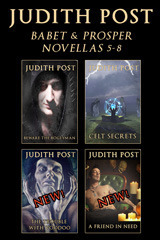
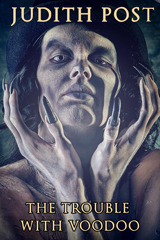
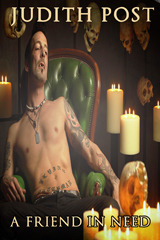 This post is about celebrating. I’ve been writing for more years than I want to count, and it takes a thick hide to learn from critiques and rejections. But a writer needs successes, too, to help her hang in there. And I’ve learned that successes come in all shapes and sizes. My husband took me out to dinner the first time one of my stories was accepted for a “pays in copies” anthology. I took him out for hot dogs at Coney Island downtown when I got a check for a whopping $35. When I sold my first mystery short story to Alfred Hitchcock’s mystery magazine, I took the whole family out to eat. Sometimes, celebrations are scaled back to fit the occasion. When I got my first “good” rejection for a novel I was pedaling, it was a raised glass of wine. When I got more “close, but no cigar” rejections, it was a box of candy. And yes, I counted the rejections as victories, not defeats. After all, an editor had taken the time to write a personal note on them, something uplifting, not a standard copy of “thanks, but no thanks.” They were a step forward, even if it was only a baby step.
This post is about celebrating. I’ve been writing for more years than I want to count, and it takes a thick hide to learn from critiques and rejections. But a writer needs successes, too, to help her hang in there. And I’ve learned that successes come in all shapes and sizes. My husband took me out to dinner the first time one of my stories was accepted for a “pays in copies” anthology. I took him out for hot dogs at Coney Island downtown when I got a check for a whopping $35. When I sold my first mystery short story to Alfred Hitchcock’s mystery magazine, I took the whole family out to eat. Sometimes, celebrations are scaled back to fit the occasion. When I got my first “good” rejection for a novel I was pedaling, it was a raised glass of wine. When I got more “close, but no cigar” rejections, it was a box of candy. And yes, I counted the rejections as victories, not defeats. After all, an editor had taken the time to write a personal note on them, something uplifting, not a standard copy of “thanks, but no thanks.” They were a step forward, even if it was only a baby step.
When I get a speed bump in my writing–a rejection that especially hurts or a campaign that falls flat–I give myself a day to grieve and get it out of my system. So it’s only fair that when I finish a novel or I get a glowing review or if more people download a book than I expected to, I give myself time to enjoy the victory, regardless of its size. You should, too. Take time to savor the good moments. Wherever you are in your writing, enjoy each step along the way. Give proper importance to each tiny victory that moves you forward. Celebrate the journey.
At the moment, I’m celebrating my two, new novella bundles that just went online. I love the covers Michael Prete made for them, one for each collection and two for the new novellas inside Collection II. I bragged about Michael’s work last week, but I felt the need to brag one more time. I shared the first cover in my last blog. Here are the covers for the second collection. The voodoo priest is on the creepy side, but he’s not very nice, so it suits him. This blog is my joyous moment before I hit rewrites on Monday and return to my everyday life of fingers on keys, striving for the right words, the right flow. But today, I’m going to play and push writing thoughts away. Today’s for fun. Enjoy your moments, too.
(If you or someone you know needs a cover, I’ll list Michael’s link one more time. He’s wonderful to work with and reasonable. You can contact him through his business site for web pages: http://vertex10.com/).
http://www.judithpostswritingmusings.com/


September 15, 2013
Writing–Before Your Book Goes Online
I’m mostly an indie author. Not exactly, because I have an agent, who’s wonderful. And an agency, which is awesome. So I get to skip some of the steps that 100% indie authors do. Which is fine by me. So I can’t tell you how to format, because Sharon–who’s an e-book wizard–does it for me. And I can’t tell you about working with a publisher, if you have a book coming out in hardback or paperback, because I’ve never done that. All I can share with you is what I know or what I’ve tried. But here are the steps I go through to get a novel/novella online:
1. People keep saying it, but they’re right. Write the best book you possibly can, because there are a LOT of books out there–some good, some bad, but you want yours to be the best it can be. So don’t slap words on a hard drive and share them with the world. Edit them. Have a few beta readers (who don’t tell you you’re wonderful and shouldn’t change a word) critique them for you. Then decide what you could do better and fix it. Now, I’ve had several friends who would be happy to NEVER send their book out into the cold, cruel world because they’re never going to be satisfied with it. They can always see one more thing to fix, one more thing that will make it shine. You have to find a happy medium here. But don’t rush your book either. When you send it out, make sure it’s good.
2. Have someone who knows his/her stuff copy edit your work. I notice misspellings, bad grammar, and the “sprinkle method” of adding commas. (I had a friend once who told me that she didn’t understand commas, so she just “sprinkled” them on the page so that they looked good). Aaargh. Grammar and spelling are the basic tools of writing, but none of us finish writing a manuscript with no mistakes. And we can’t always see our own mess-ups. Make sure your manuscript is clean before you offer it to the world. (My biggest weakness is hyphens. Hope one belongs in mess-up???)
3. Once your manuscript is ready to go, it’s time to format it for whatever site you’re going to load it on. Most of my writer friends pay someone to do this for them. A few take the time and effort to do it themselves. I’m lucky. (And I know it). Sharon does it for me.
4. Books need a cover. I’ve been lucky enough to work with Michael Prete. I love the covers he’s created for my novels and novellas. (And for the first time, he’s told me he’d like to do more covers, so I can share his name and web page: http://vertex10.com/. He usually designs web pages, so his site only shows his professional work as a web designer, but if you like any of the covers on my work, he’s done all of them, and his prices are reasonable!!). He’s also been kind enough to let me find images that I think fit the story/tone that I’m trying to create. Sometimes, I only use one image for a cover. Sometimes, I combine them. I just copy the links of what I like and send them to him, and he works his magic. But whatever you decide to do, your book cover is what makes people notice your novel. Don’t kid yourself. People DO judge books by their covers. Here are my two favorite sites to find images for Michael to work with: http://www.canstockphoto.com/ and http://www.shutterstock.com/. Be warned, though, once you start flipping through all of the images, you can lose a few hours without noticing.
5. And last, but not least, once your book is ready to go, how are you going to market/promote it? What have you got in place to help people find it? I’ve already shared a few great marketing sites in previous blogs. A good one is http://www.lindsayburoker.com/. Another is https://twitter.com/BadRedheadMedia. I had great luck with Book Bub ($90), but it’s getting harder and harder to get your book listed there. I had okay luck with http://www.ebookbooster.com/ ($40). By okay, I mean I had over 3,000 downloads of my free book with ebookbooster. Not bad, but nothing compared to the 18,000+ downloads I got from Book Bub. Later this month, I’m going to try out the parajunkee site to see how that works for the release of my 2 new novella bundles. I’m experimenting, looking for a mix of sites that help readers discover my work. I’ve been lucky enough to have several bloggers feature my books. I still haven’t been brave enough to try a blog tour. Twitter makes a difference when I tweet about a new release. So does Goodreads when I self-promote in Making Connections or Nexus. But an occasional paid ad has proven pretty effective, worth the money, (but only because I have more than one book online). All that I’m saying is that not many people are going to stumble on your book amid the thousands or millions of novels on amazon and Nook unless you help them find it. You can twitter (but do it right. Don’t just list your book over and over again. People stop reading your tweets). You can join Goodreads or Facebook. Or start a blog. But whatever you do, do something!
P.S. Just because I LOVE this cover and I mentioned Michael, this is the cover he created for the first Babet/Prosper bundle that’s going online Sept. 23–and this one happens to be FREE when it goes up.
My facebook page (but it’s mostly the blogs you’ve already read): https://www.facebook.com/home.php#!/JudithPostsurbanfantasy


September 8, 2013
Writing–& Rewrites
I’ve been reading different authors talk about how they do rewrites. There’s no right or wrong way. Each person has to find what works for him or her. Some of my friends write “long,” throwing everything on the paper for their first drafts, and then go back to cut and tighten when they polish their books. Some of us write lean and then have to add when we do rewrites. But those are the BIG rewrites, when the manuscript’s finished and we’ve let it set and we’re ready to dig in and do whatever it takes to make it work.
I’m not patient or brilliant enough to multi-task and to do too many things at once. Keeping that in mind, I tend to do lots of smaller rewrites as I scribble away. Every day, when I start writing, I polish what I wrote the day before. There are times when I spend my entire writing schedule for that day, going over the same scene I fought with before. Once it’s decent, I move on. When I reach the end of the first fourth of my book, (and yes, I do have my main plot points planned out, so I know where each turning point is), then I go back and rewrite that fourth of my book. I look for passive verbs (and I still miss some). I look for “show, don’t tell.” I look for description and emotion. Have I used the five senses? Have I made my protagonist real? Did I use enough internal dialogue so that the reader feels what she feels? Did I make her reactions true to her character and remember that how she reacts is often how the readers will react. Have I given the story a sense of immediacy?
Once I’m satisfied with that fourth of the story, I write two or three ideas for big scenes for the next fourth of the book, remind myself what the twist is at the end of that section, and start the whole process again. I write and rewrite as I go, then do another rewrite of that fourth when it’s finished. I can hold a fourth of a book in my head. I can’t keep track of the entire thing, so I inch my way along, scene by scene, fourth by fourth.
When the entire manuscript’s finished, then I start at the beginning and do a final rewrite of the entire thing before I humble myself and give it out for critiques. This time, I look for more than just basics. I look for vivid images, specific words. Did I get lazy and use a generic verb when I could have used a better one? How does the manuscript flow? Does the tension escalate? Do I care about the characters, or did I create a sidekick that functions, but never came to life? And did I do anything special? Something that surprised myself? A turn of phrase I didn’t know I had in me. A clever plot twist I–and hopefully readers–didn’t see coming? And even after all that work, my pages return from my trusted friends with red ink rimming their borders.
I read all of the critiques (which are usually right, darn it!), and I do my last, hardest rewrite before I send the manuscript to my agent. Then I keep my fingers crossed. Sometimes, I get lucky and only have a few scenes to fix. Sometimes, like for Shadow Demon, she tells me she’d like the book to be tighter to make the action move faster. I cut the word count from 85,000 to 70,000–tossing two, small subplots. And then she okayed it.
When I first started writing, I hated rewrites. They weren’t as much fun as the burst of creativity when my fingers flew across the keyboard, describing new scenes, new adventures. Now, I think of rewrites as my best friend. They let me add layers, nuances, polish that I could never manage in one or two brushes of words and energy. Rewrites allow me to add layers to the skeleton of my story and characters, to flesh out scenes and plot points. Rewrites aren’t just about fixing things. It’s about polishing a diamond from a rough cut to a gem.


September 1, 2013
Writing: what keeps me turning the pages
Okay, I hate to admit this, but I started reading Gena Showalter’s The Darkest Night, the first novel in The Lords of the Underworld series, and I’ve found it seriously addicting. I bought it because it had a Greek myth base as its premise, and I love Greek myths. I’ve kept reading it, clicking the page button on my Kindle at a furious pace, because I’m hooked on the characters and the storyline. Now, I like to think that luscious language, depth of character, and intriguing ideas rivet my attention. And they do. But obviously, some good, old-fashioned lust and violent emotion can keep me turning pages, too.
I recently finished The Debt Collector series, 9 novellas by Susan Kaye Quinn, and those held my attention with original ideas, page after page of tension, and cliffhanger endings. You know the strategy–end every chapter with a hook. Her nine novellas could be used as textbook examples for that. Ilona Andrews’ urban fantasy novel, Magic Strikes, kept me up nights by upping the stakes with each and every event involved with the secretive Midnight Games–to-the-death matches that aren’t supposed to take place, but do. Placing a protagonist in peril always increases tension and guarantees that pages turn faster. And every reader knows that each battle until the last becomes harder and harder to win, escalating to the final showdown.
I’m still a fan of the solid, traditional murder mystery. Those keep me hooked by offering glimpses of clues, a red herring here and there, and tantalizing false leads. I don’t need to have the protagonist in mortal danger. I just want to solve the mystery before he does. (Am I competitive? Maybe a little).
There are lots of ways of holding a reader’s attention, but after considering the novels I’ve read this summer, I still think emotional impact is one of the strongest. Plots have to hang together. Tension has crank so tight, the reader can’t put the book down. But I’ve been working harder to include emotion in each scene I write, either subtly or like a sledgehammer. It sure keeps me involved in the characters I read about and the repercussions of their choices. And judging by the success of Gena Showalter, who uses it extremely well, I’d say it affects lots of other readers too.
http://www.judithpostswritingmusings.com/
P.S. I’m excited. I have two, new Babet and Prosper novellas that will go online this month. There’s just something about that witch and werebear. Or maybe part of it’s River City’s voodoo and magic. They’re just plain fun to write!



